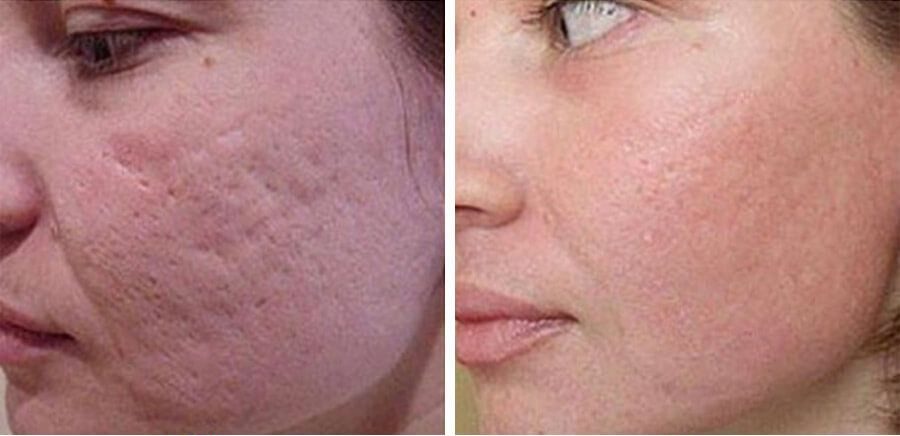Acne scar treatment with fat, a cosmetic procedure using microlipoinjection therapy as a liposuction technique, is gaining popularity as a solution for those struggling with skin imperfections. This innovative method utilizes microlipoinjection fat grafting to fill in and smooth out scars, offering a natural and effective filler alternative to traditional treatments, asds dermatologist recommended for buttocks. Historically, acne scars have been challenging to treat, leading many to seek various remedies over the years, including cosmetic changes post treatment, fat grafts, and fat cell grafting, often with the help of an ASDS dermatologist.
Fat transfer techniques have evolved, providing patients with more options and better results in acne scars procedure, scar treatment support, and scar size method. This approach not only enhances skin texture through structural fat grafting but also promotes healing by using the body’s own resources in the acne scars procedure with autologous fat and fat cell grafting. With minimal downtime and lasting effects, acne scar treatment with fat is becoming a go-to choice for individuals wanting clear skin.
Key Takeaways
-
Fat transfer can effectively reduce the appearance of various types of acne scars, such as atrophic and boxcar scars, by adding volume to the skin.
-
The procedure offers benefits like natural results and minimal downtime through techniques such as fat cell grafting and autologous fat, making it a popular choice for those looking to improve their skin’s texture with structural fat grafting.
-
It’s important to weigh the drawbacks of the acne scars procedure, including potential side effects and the need for multiple sessions, before deciding on fat transfer.
-
Proper preparation is crucial; consult with a qualified dermatologist to assess your skin type and determine if you’re an ideal candidate for the acne scars procedure involving autologous fat, fat cell grafting, or structural fat grafting.
-
During the procedure, expect a minimally invasive technique that involves harvesting fat from another part of your body and injecting it into the scarred areas.
-
Post-treatment care is essential for optimal recovery after the acne scars procedure; follow your doctor’s instructions to ensure the best results, and consider combining fat transfer with other treatments for enhanced effects.
Understanding Fat Transfer for Acne Scars
Fat Transfer Process
Fat transfer, an acne scars procedure, involves using processed fat from the patient’s own body. This method helps elevate depressed acne scars. The process begins with liposuction, where a small amount of fat is removed from a donor area, often the abdomen or thighs.
The surgeon uses a thin tube called a cannula to extract fat cells in the acne scars procedure. This acne scars procedure is minimally invasive and usually requires only local anesthesia with structural fat grafting. After collecting the fat, it undergoes processing to separate healthy fat cells from unwanted materials.
Injection Technique
The next step is injecting the prepared fat into the scarred areas. This technique is known as microlipoinjection or autologous fat transplantation. It allows for precise placement of fat cells, promoting better results.
Surgeons use a fine needle or cannula to inject small amounts of fat into specific spots. This precision helps ensure that the fat integrates well with surrounding tissues. Patients often notice immediate improvements in skin texture after structural fat grafting the procedure.
Benefits of Fat Transfer
Fat transfer has several advantages over other acne scar treatments. First, it uses structural fat grafting with the patient’s own tissue, reducing the risk of allergic reactions. This makes it a safer option for many individuals.
Second, the procedure can provide long-lasting results. Once injected, the fat cells can survive and integrate into the skin. Many patients enjoy improvements from structural fat grafting that last for several months or even years.
Third, this treatment can improve overall skin quality. The transferred fat contains stem cells that may promote healing and rejuvenation in the treated area.
Recovery and Results
Recovery from fat transfer is generally quick. Most patients can return to normal activities within a few days after structural fat grafting. Minor swelling and bruising from structural fat grafting are common but usually resolve quickly.
Results vary based on individual factors like skin type and the extent of scarring. Many patients see noticeable changes after just one session. However, some may require multiple treatments for optimal results.
Follow-up appointments help monitor progress and determine if additional sessions are needed.
Considerations
While fat transfer is effective, it may not be suitable for everyone. Individuals with certain medical conditions should consult their doctor before proceeding. Discussing expectations and potential outcomes during consultations is essential.
The cost of this treatment varies depending on location and complexity but typically ranges from $1,500 to $5,000 per session.
Types of Acne Scars Treated
Superficial Scars
Superficial scars form when the skin heals after mild acne. These scars often appear as small, flat marks on the skin. They usually do not require extensive treatment.
Fat transfer can improve the appearance of these scars. The procedure adds volume to the scar area. This helps create a smoother skin texture.
Surgical Scars
Surgical scars result from more invasive acne treatments. These include procedures like surgical scar excision. The goal is to remove deep or problematic scars.
Fat transfer can also be beneficial for surgical scars. It fills in the depressions left by surgery. This method promotes scar healing and improves overall aesthetics.
Deep Contour Defects
Deep contour defects are common in nodulocystic acne cases. These defects create significant indentations in the skin. Fat transfer directly targets these areas.
The fat injection fills in the depressions effectively. Patients often notice a marked improvement in their scar size and appearance.
Atrophic Scars
Atrophic scars are depressed scars that form when the skin loses collagen. Fat transfer is particularly effective for these types of scars. The procedure restores volume and smooths the skin’s surface.
Many dermatologists recommend this approach for atrophic scars. It provides long-lasting results compared to other methods.
Hypertrophic Scars
Hypertrophic scars are raised scars that develop due to excessive collagen production. Fat transfer may not be suitable for these types of scars. Injecting fat into raised areas could worsen their appearance.
Alternative treatments exist for hypertrophic scars. Options include steroid injections or laser therapy, which help flatten the scar tissue.
Scar Management Support
Scar management support is essential for optimal outcomes after any acne scar treatment. Following the procedure, patients should follow specific guidelines to aid healing.
These guidelines may include keeping the treated area clean and avoiding sun exposure. Consulting with an ASDS dermatologist ensures proper care during recovery.
Patients should also discuss their expectations with their dermatologists before undergoing any acne scars procedure. Understanding possible results helps manage hopes regarding scar improvement.
Results Over Time
Results from fat transfer for acne scars may take time to fully develop. Initial swelling may mask improvements right after treatment. As the swelling subsides, results become clearer.
Patients often experience satisfaction with their scars results after several months. Regular follow-up appointments can track progress and address any concerns.
Benefits of Fat Transfer
Natural Results
Fat transfer uses the patient’s own fat, leading to a natural look and feel. This method involves harvesting fat cells from one part of the body, then injecting them into the scarred area. The body recognizes these fat cells as its own. As a result, patients often experience smoother skin that blends seamlessly with their natural complexion.
This procedure stands out among other acne scar treatments. Many alternatives use synthetic fillers, which can sometimes create an artificial appearance. Patients appreciate that fat grafting provides a more organic outcome. They can enjoy enhanced facial volume without looking overdone.
Low Risk of Rejection
Fat transfers carry a low risk of allergic reactions or rejection. Since the treatment utilizes the patient’s own tissue, there is minimal chance of adverse effects. This contrasts with dermal fillers made from foreign substances. Allergic reactions can lead to swelling, redness, or even infection.
The safety profile of fat injection procedures makes them appealing to many individuals seeking acne scar treatment. The body accepts the transferred fat, allowing for smoother integration into the skin. This gives peace of mind to those concerned about complications.
Longevity of Results
Repeated treatments can lead to long-lasting results with fat transfer procedures. After the initial fat cell transfer, some cells may be reabsorbed by the body. However, surviving cells can thrive in their new location and provide lasting benefits.
Patients often notice improvements in skin texture and tone over time. With multiple sessions, they can achieve optimal results that last longer than traditional fillers. Regular follow-ups allow doctors to assess progress and make adjustments as needed.
Additional Advantages
-
Minimal Downtime: Recovery from fat grafting is typically quick. Most patients resume normal activities within days.
-
Dual Benefits: The procedure not only improves scars but also contours areas where fat was harvested. This creates a more balanced appearance.
-
Versatile Application: Fat transfer can treat various types of scars beyond acne, including surgical or traumatic scars.
-
Enhanced Skin Quality: Fat contains stem cells which may improve overall skin health and elasticity.
In summary, fat transfer offers numerous advantages for treating acne scars. It provides natural-looking results with minimal risk of rejection and long-lasting effects with repeated treatments. Patients benefit from improved skin quality and fewer complications compared to synthetic options.
Drawbacks of Fat Transfer
High Reabsorption Rate
Fat transfer for acne scar treatment has some notable drawbacks. One major issue is the high rate of fat cell reabsorption. Studies show that up to 50% of injected fat can be reabsorbed by the body within six months. This means that patients often need multiple treatments to achieve the desired results. Each session can lead to additional costs and time spent in recovery.
Patients must also consider that not all areas may retain the fat equally. Some regions might absorb more than others, leading to uneven results. This unpredictability can be frustrating for those seeking a smooth appearance.
Post-Procedure Effects
After the procedure, there can be potential risks associated with swelling, bruising, and redness. These side effects are common and may last several days or even weeks. Swelling can obscure initial results, making it hard to judge the effectiveness right away. Bruising may also draw attention, which can be uncomfortable for some individuals.
Patients should prepare for these post-procedure effects. Ice packs and prescribed medications can help manage discomfort and reduce inflammation. However, it’s important to note that everyone reacts differently. Some may experience more severe reactions than others.
Follow-Up Necessity
Follow-up appointments are crucial after fat transfer treatments. These visits allow healthcare providers to monitor progress effectively. They assess how well the fat has integrated into the surrounding tissue. Regular check-ups ensure that any complications are addressed early on.
Patients should expect at least one follow-up appointment within a few weeks of the procedure. Additional visits may be necessary depending on individual healing rates. This ongoing care adds another layer of commitment for those considering this treatment.
Each step in this process requires careful consideration of the potential risks involved. Understanding these drawbacks is essential for making an informed decision about acne scar treatment with fat transfer. Patients should weigh these factors against the benefits discussed earlier.
Preparing for the Procedure
Marking Injection Points
Patients must begin with a clear plan. The doctor marks the injection points on the skin. This helps in targeting areas with acne scars. Proper marking ensures accurate placement of fat injections. It also minimizes discomfort during the procedure.
Cleansing the area is essential. A medical professional uses an anti-bacterial agent for this step. This reduces the risk of infection. Clean skin is vital for a successful outcome.
Anesthesia Application
Pain management is crucial in cosmetic procedures. A topical numbing agent is applied to the marked areas. This helps reduce discomfort from the small needle used for injections.
In some cases, ice packs may be used before starting. Ice numbs the skin and decreases swelling. Local anesthesia might also be an option for patients who need it. This method provides deeper pain relief during the procedure. Patients should discuss their preferences with their doctor.
Fat Removal Process
The next step involves fat removal from another part of the body. This process is called liposuction. Doctors often use a syringe to extract fat from areas like the abdomen or thighs.
Once the fat is collected, it undergoes processing. The doctor separates viable fat cells from other materials. Only healthy fat cells are prepared for injection beneath the scar.
After processing, doctors inject the fat into the marked areas using a syringe. The goal is to fill in and smooth out acne scars effectively. Each injection aims to promote scar retraction and improve skin texture.
Risks and Considerations
Every surgical skin rejuvenation procedure carries potential risks. Patients must be aware of these before proceeding. Possible complications include infection, uneven results, or allergic reactions to anesthesia.
Discussing medical history with a healthcare provider is crucial. Patients should inform their doctors about any previous surgeries, allergies, or health issues. This information helps minimize risks and ensures safety during the procedure.
Post-Procedure Care
Recovery can vary from patient to patient. Following proper aftercare instructions can improve results and reduce complications. Doctors usually recommend avoiding strenuous activities for a few days post-procedure.
Patients may experience some swelling or bruising at injection sites. These symptoms are typically temporary and should subside within a week or two.
What to Expect During the Procedure
Duration
The entire procedure typically takes about one hour. This includes preparation, the actual fat injection, and post-procedure care. Patients should plan for a visit that lasts longer than just the injection time.
Injection Process
A small needle is used for injecting the processed fat into the skin. The doctor carefully places the needle at various points on the face or body. This technique helps to ensure even distribution of the fat.
The physician will take great care during this process. They will focus on areas with acne scars, aiming to improve skin texture and appearance.
Comfort Measures
Patients are kept comfortable with numbing agents or anesthesia. Before starting, medical staff apply a topical numbing cream to minimize discomfort. Some patients may receive local anesthesia injections as well.
These measures help reduce pain during the procedure. Most people report feeling little to no discomfort while the injections occur.
Recovery Expectations
After the procedure, some swelling and bruising may occur at the injection sites. These effects are usually mild and subside within a few days.
Patients can expect to see initial results shortly after treatment. However, final results will develop over several weeks as the fat settles into place.
Follow-Up Care
Follow-up appointments are essential for monitoring progress. Doctors may suggest specific skincare routines to enhance healing and results.
Patients should adhere to these recommendations closely. Proper care helps maintain improvements in skin texture.
Post-Treatment Recovery
Return to Work
Most patients can return to work immediately after the treatment. The procedure usually causes minimal disruption to daily activities. Many feel comfortable resuming their routine within a few hours. This quick recovery is appealing for those with busy schedules.
Possible Side Effects
Side effects may occur after the treatment. Common reactions include swelling, bruising, and redness. Some patients might also experience scabbing in the treated areas. These symptoms are typically mild and resolve within a few days. However, it’s important to monitor the skin closely during this time.
Pain Management
Pain relievers can help manage discomfort post-treatment. Doctors often prescribe over-the-counter medications for pain relief. Antibiotics may also be given to prevent infection. Following these prescriptions helps ensure a smooth recovery.

Absorption Process
The absorption of fat used in the treatment plays a crucial role in recovery. Fat cells need time to integrate into the skin. This process can affect the overall outcomes of the treatment. Patients should expect changes as their skin heals.
Rapid Healing Process
The healing process varies from person to person. Most patients notice improvements within weeks. Full results may take several months to manifest as the body adjusts. Regular follow-up appointments can help track progress.
Cosmetic Changes Post Treatment
Patients often experience cosmetic changes post-treatment. Initial swelling may alter how results appear temporarily. As swelling subsides, the true effects of the treatment become visible. Understanding this timeline is essential for managing expectations.
Time Considerations
Recovery time can differ based on individual factors. Age, health, and skin type influence how quickly one heals. Generally, most people find that they recover faster than expected.
Ideal Candidates for Fat Transfer
Deep Scars
Individuals with deep, depressed acne scars are ideal candidates for fat transfer. These scars often create a noticeable texture on the skin. Traditional fat grafting can help fill in these depressions, leading to smoother skin.
Candidates should have a clear understanding of their scar type. Not all acne scars respond equally to treatment. For instance, rolling scars and boxcar scars may benefit significantly from fat grafting techniques.
Sufficient Donor Fat
Candidates must have sufficient donor fat available for the procedure. Autologous fat grafting requires harvesting fat from another area of the body. Common donor sites include the abdomen and buttocks.
During the liposuction fat grafting technique, surgeons extract fat using a liposuction device. This harvested fat is then processed before being injected into the scarred areas. A good amount of adipose graft ensures effective results.
Overall Health
Good overall health is necessary for optimal results. Surgeons assess the candidate’s health during consultations. Individuals with chronic illnesses or certain skin conditions may not be suitable for this procedure.
Healthy candidates typically experience better healing and fewer complications. They also have a higher chance of successful fat cell grafting outcomes.
Surgeons often recommend lifestyle changes before the procedure. These may include quitting smoking or improving diet and exercise habits.
Realistic Expectations
Candidates should have realistic expectations about the outcome. While fat grafting can improve appearance, it may not eliminate scars completely. Understanding what can be achieved helps in making informed decisions.
Post-treatment recovery plays a crucial role in achieving desired results. Following aftercare instructions is essential for success.
Consultation Process
The consultation process is vital in determining candidacy for this treatment. During this phase, potential candidates discuss their medical history and aesthetic goals with a surgeon.
Surgeons evaluate skin condition and scar depth during consultations. They also explain the fat grafting liposuction procedure in detail, ensuring candidates understand each step.
Potential candidates might also receive information on alternative treatments. This includes dermal fillers or laser therapy if they are not suitable for fat transfer.
Combining Fat Transfer with Other Treatments
Laser Therapy
Fat transfer can be more effective when combined with laser therapy. This technique uses focused light to improve skin texture and tone. The heat from the laser stimulates collagen production. Increased collagen helps in reducing the appearance of scars.
Laser therapy works well on different scar types, including hypertrophic and atrophic scars. Patients often notice smoother skin after this combination treatment. Research shows that using lasers alongside fat transfer can enhance overall results.
Microneedling
Microneedling is another great option to pair with fat transfer. This method involves tiny needles making micro-injuries in the skin. These injuries trigger the body’s healing response, promoting new skin growth.
Using microneedling before fat injection can prepare the skin for better absorption of fat. It also improves blood flow to the area, which aids in healing. Many patients report improved texture and reduced visibility of scars after this combination.
Comprehensive Treatment Plan
A comprehensive treatment plan is essential for addressing various acne scar types. Different scars require different approaches for effective treatment. For instance, ice pick scars may need deeper injections compared to rolling scars.
Combining auto fat injection treatments with other therapies allows for a tailored approach. Each patient’s needs are unique. A customized plan can maximize results and minimize downtime.
Patients should consult with a qualified dermatologist before starting any treatment plan. They can provide guidance on the best combinations based on individual skin conditions and scar types.
Summary
Fat transfer is a promising option for treating acne scars. It offers benefits like natural results and minimal downtime. However, it’s essential to weigh the drawbacks and prepare adequately. Knowing what to expect during the procedure and recovery can ease your mind.
If you’re considering fat transfer for your acne scars, consult a qualified professional. They can guide you through the process and help determine if you’re an ideal candidate. Remember, combining treatments may enhance results. Don’t hesitate to explore all your options. Your skin deserves the best care possible!
Frequently Asked Questions
What is fat transfer for acne scars?
Fat transfer involves harvesting fat from one part of your body and injecting it into areas with acne scars. This technique helps to fill in depressions, promoting smoother skin texture.
How long do the results last?
Results can last anywhere from six months to several years, depending on individual factors like skin type and lifestyle. Maintenance treatments may be needed for optimal results.
Is the procedure painful?
Most patients experience minimal discomfort during the procedure. Local anesthesia is typically used to ensure a pain-free experience.
Are there any risks involved?
As with any medical procedure, there are risks such as infection, swelling, or uneven results. Consulting with a qualified professional can help mitigate these risks.
How should I prepare for the treatment?
Avoid blood thinners and alcohol at least a week before the procedure. Discuss any medications or supplements you’re taking with your doctor.
Can fat transfer be combined with other treatments?
Yes, fat transfer can complement other procedures like laser therapy or chemical peels for enhanced results. Consult your dermatologist for personalized advice.
Who are the ideal candidates for fat transfer?
Ideal candidates are generally healthy individuals with realistic expectations. Those seeking a natural-looking solution for acne scars often benefit most from this treatment.





